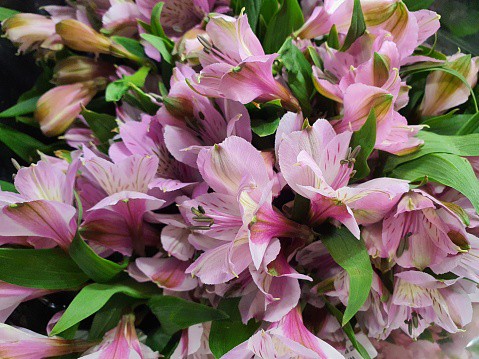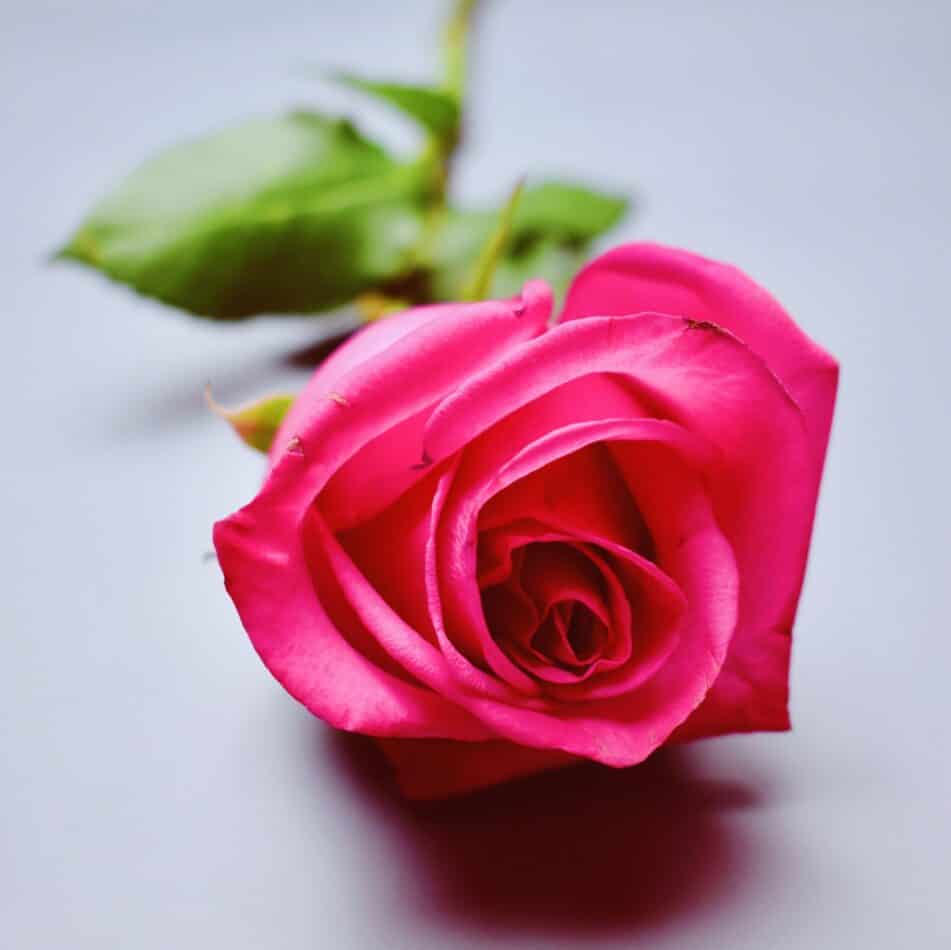The Peruvian Lily, or Alstroemeria Aurea, is a part of the Alstroemeriaceae family and is a tuberous perennial. It is a hardy plant and has clusters of orchid-like flowers, which are typically orange, yellow, and red in color. Striped and spotted petals provide a unique aesthetic, and the Peruvian Lily grows up to three feet tall and is a great choice for accent landscaping. Blooms arrive in early to mid-summer, bringing a golden hue with them.
How to Plant and Grow Peruvian Lily
Unlike other flowers in the family Alstroemeria, the Peruvian Lily can be planted either indoors or outdoors. It will thrive in a variety of habitats, and the following guide will help you successfully bring this beautiful flower home.
Light
To ensure a healthy growth rate, the Peruvian Lily needs at least five hours of direct sunlight. For the most vibrant colors and the fullest flowers, make sure to also provide some indirect light each day.
Soil
The Peruvian Lily enjoys well-drained, compost-rich soil that contains plenty of organic matter. Ammonium-based fertilizers can also be applied every month to maintain healthy soil conditions. For indoor plants, ensure that your container has drainage holes to avoid root rot.
Water
The Peruvian Lily requires moderate amounts of water, so it must be watered regularly throughout the growing season. Make sure to reduce the amount during the winter months, and avoid overwatering as it is not overly tolerant of humid conditions.
Temperature and Humidity
The Peruvian Lily is tropical in origin, so it prefers a warm and humid climate. During the colder months, make sure to protect your plant from frost and temperatures below 40 degrees Fahrenheit.
Fertilizer
Ammonium-based fertilizers can be applied every month to maintain healthy soil conditions. Additionally, make sure to watch the health of your soil throughout the year and add any necessary amendments to ensure its fertility.
Meaning and Symbolism
The Peruvian Lily has long been associated with a variety of meanings and symbolism. In some cultures, it is seen as a symbol of prosperity and prosperity. The flower itself is also seen to represent love, devotion, and happiness. Additionally, the Peruvian Lily can be seen as a sign of good luck and fortune.
History, Mythology, and Religious Significance
In Peru, the Peruvian Lily has been found since pre-Columbian times. It is thought to have been used as an offering in religious ceremonies, and its presence has been recorded in Incan religious texts. In more modern times, the Peruvian Lily is regarded by some to be the national flower of Peru, and the plant is often used as a symbol of national pride.
Flower Varieties and Defining Characteristics
The Peruvian Lily is most often found in shades of orange, yellow, and red, but some varieties also feature creamy white petals and purple stems. The flowers are either striped or spotted, and some varieties also feature a combination of both. Many of the more common varieties include:
- Alstroemeria Aurea
This variety is one of the hardier flowers in the Alstroemeria family. The petals are typically orange, yellow, and red in color. Striped and spotted petals can provide a unique aesthetic.
- Alstroemeria Expresia
This variety features petals with magnificent yellow and red stripes and spots. The petals tend to be longer than other varieties and provide a more stunning look.
- Alstroemeria Maculata
This variety features flowers with white petals and purple stems. Stripes and spots provide a unique color combination that makes this variety highly sought after.
- Alstroemeria Phoenicea
This variety features a striking red-orange hue with white and yellow stripes. It makes for a beautiful addition to any garden or landscaping project.
How to Pot and Repot
When bringing the Peruvian Lily home, it is important to give it a suitable pot or container. For indoor plants, make sure to choose a pot that is slightly wider than the root ball of the plant. Repotting should take place every two to three years, with the pot being shifted in size as the plant grows.
When potting, use soil that is specifically designed for flowers, or a combination of sand and compost. Make sure to fill the bottom of the pot with a few inches of the soil to maintain its drainage. Additionally, while the soil is settling make sure to water it lightly to remove any unwanted air pockets.
How to Prune
Prune the Peruvian Lily only when it is necessary. This should be done in the early spring, to make way for new growth. Make sure to cut the flower stems where they meet the base of the plant and enjoy its refreshed look.
How to Propagate
The Peruvian Lily can be propagated through stem cuttings. Take a stem cutting at the beginning of spring and put it in a warm and humid environment. Keep the pot out of direct sunlight until the stem has rooted, at which point you can transfer it to its new home.
Common Pests and Diseases
Most common pests and diseases that the Peruvian Lily may be susceptible to include root rot, aphids, and spider mites. Root rot can cause the leaves to yellow and droop, and is caused by overwatering. Aphids can appear as small clusters around the flowers and stems and will cause stunted growth if not quickly removed. Spider mites will produce webs on the stems, and should be removed immediately with a solution of insecticide soap.
Frequently Asked Questions
Q. How long will the flowers last?
A. The flowers typically last around two to three weeks, depending on the variety and habitat.
Q. How should I store the bulbs?
A. The bulbs should be stored in a cool and dark place with temperatures around 40 to 50 degrees Fahrenheit.
Q. Are there any special precautions I should take when planting the Peruvian Lily?
A. When planting, make sure to provide plenty of compost-rich soil, plenty of sunlight, and moderate levels of water. Additionally, it is important to avoid overwatering to prevent root rot.
Fact Sheet
| Property | Information |
|---|---|
| Family | Alstroemeriaceae |
| Plant Type | Tuberous Perennial |
| Mature Size | Up to 3 feet |
| Sun Exposure | 5 hours direct sunlight, plus indirect light |
| Soil Type | Well-drained, compost-rich soil |
| Soil pH | Neutral |
| Bloom Time | Early to mid-summer |
| Flower Color | Orange, yellow, red |
| Hardiness Zones | 8-11 |
| Native Area | Peru |
What we love from Amazon this week
Buy these wonderful flowers directly from Amazon:















